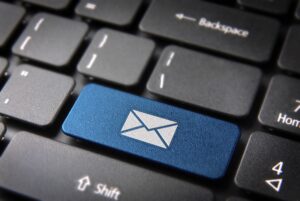Okay, moment of truth. The world of digital marketing is complex. Many marketers feel overwhelmed with managing various online activities and trying to find the digital marketing “sweet spot” that not only delights customers and target audiences but that also boosts conversion rates and marketing ROI.
One area of digital marketing that many marketers try to master is email marketing. Although building a solid email marketing campaign might require some initial investment in selecting software, writing content, and setting up tracking codes, the good news is that email marketing can be also automated, saving marketers more time and resources than they realize.

Why Email Autoresponders?
However, the overall success rate of email automation has everything to do with the quality of the emails as well as email autoresponders. But before we get too ahead of ourselves, what exactly is an email autoresponder? An autoresponder is a long or short-term series of emails that is usually focused on a specific topic and that is delivered in a particular sequence and at a particular day and time.
The reason why email autoresponders are so effective is because they provide the user with context, quality, and useful information, and also build trust. If your email autoresponder series is successful, then the reader will open your email, visit your website or call your contact number to make a purchase or do business with you.
How to Choose a Topic for Email Autoresponders
The first step in creating a stellar autoresponder series is to choose a topic that satisfies your audience’s needs or touches on their pain points. When selecting a topic for your autoresponder series, you should first look at some of your existing content. Consider asking yourself or your team some of the following questions:
- Which posts have performed best?
- Which topics generated the most reactions?
- What types of content (images, video, blogs, etc.) does your audience typically engage with?
Consider tapping into some of the content that you already created, such as published blogs or social media. Remember, social media is your ideal market research tool. You can easily see what your audience “likes”, shares, and which topics they resonate with the most. So why reinvent the wheel if you don’t have to?
The goal of an email autoresponder is to provide additional useful information on a specific topic. However, encouraging the reader to take an action that results in a sale doesn’t break the rules. Be sure to consistently address your audience’s needs and highlight the features and stress the benefits of your product or service. It may take some time for you to discover the right balance between educational and promotional copy.
Tips for Delivering Autoresponder Emails
Although you may have some good topic ideas, ultimately you want to choose a topic that is relevant to your email lists. Who are you trying to target with your autoresponder? What is the overall goal of your autoresponder series? What are you trying to accomplish with your email marketing efforts? Knowing whom you are trying to target will clue you in on how to adjust the tone and message in your content. Now that you have figured out the what and who, now it’s time to focus on the when and how. Here are some tips on building and delivering autoresponders.
Emulate. If this is your first time setting up an email autoresponder series, then consider looking at some of your competitors’ strategies and emulate them, if possible. However, there are differing opinions surrounding the overall effectiveness of a short series and a long series. For example, some marketers believe that a short series will be easier to create and build and will be more appealing to readers.
On the other hand, other marketers believe that a longer series give marketers an opportunity to dive deeper into a topic and build trust with readers over the long term, making it a better lead nurturing strategy.
Although long-term series typically see more “unsubscribes” than shorter series, this might be an effective strategy to see who might be interested in your products and services from those who aren’t.
Set a schedule. Many reports have shown that timing is a huge factor in delivering a successful marketing campaign, so put some thought into the number of emails your autoresponder series will include as well as when the emails will be delivered. Developing a set schedule will also help you and your team stay organized. Be sure to consider the various time zones of your readers.
Test. After your autoresponders are built, the next step is to deliver and test them to see which emails are most effective, which are generating the most open or click-through rates, and which are actually leading to conversions. Testing over time will also help you to determine whether a long or short series works best for your business.
Many reports have shown that 69 percent users unsubscribe due to “too many emails”, so if your email campaign isn’t working the way you’d like, then it may be time to revisit:
- Subject lines – Are they engaging? If you received an email with your subject line, would you open it?
- Call-to- actions (CTAs) – Are they clear? Be sure to also test the links in your email from time to time to make sure they go to the appropriate landing page on your website.
- Timing – When are emails being sent? Is there a better day/time that would generate more response?
Get Ready to Go “Auto”
Autoresponder email marketing can be an effective tool for many businesses, and with the ease and accessibility of data and analytics dashboards, email marketing automation is easier to measure and manage than ever before. Marketers have access to real-time data on their email marketing efforts, providing them with insights on what is working and what isn’t.